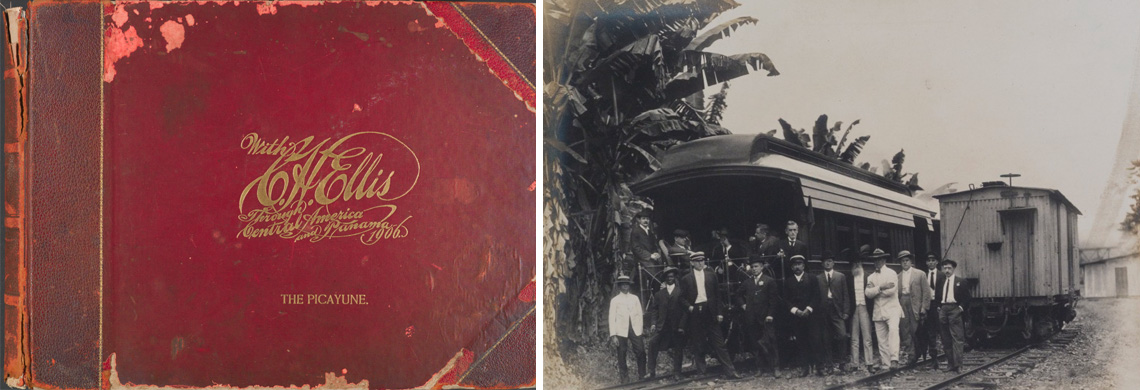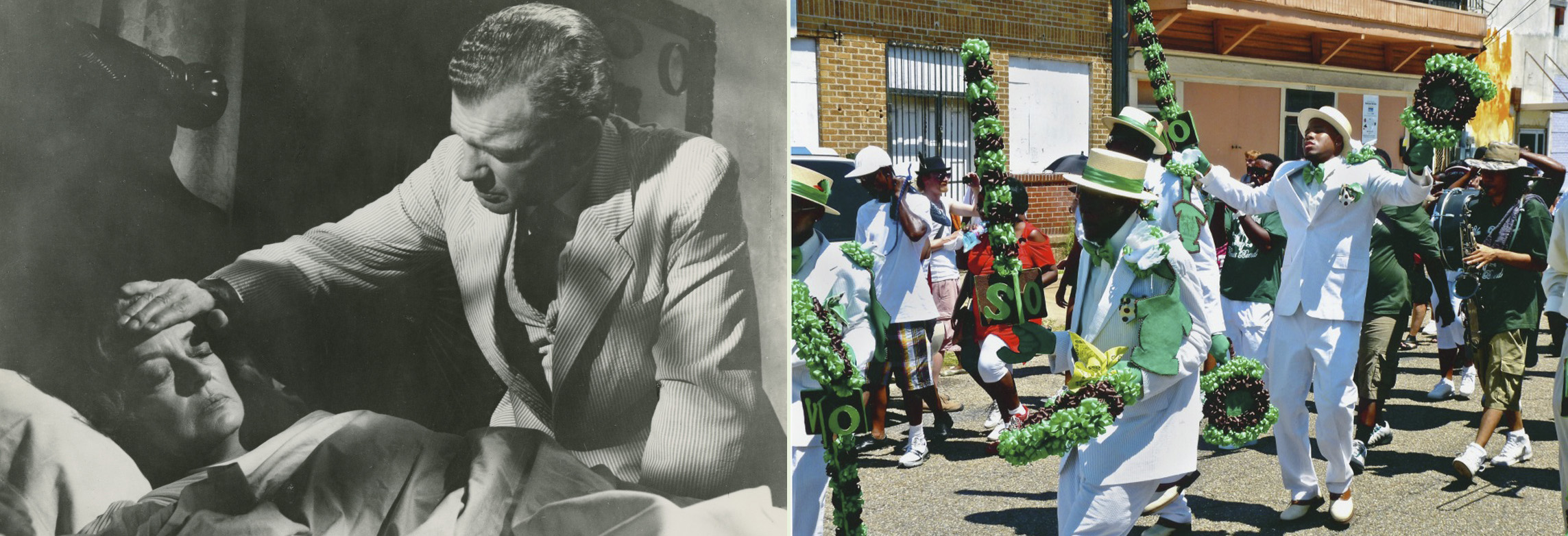Nutria were once a valued member of Louisiana's wildlife family. Not anymore.
The work of the Decorative Arts of the Gulf South project has revealed stories of African American material culture throughout the region.
Access to capture the intimate action of a second line is earned over beers in favorite club watering holes, in the quieter moments that precede and conclude a parade, and during the kinetic events themselves, where unspoken rules of artistic engagement are observed.
October 2, 2020, marks the 100th wedding anniversary of General L. Kemper and Leila Moore Williams, founders of The Historic New Orleans Collection. To celebrate this milestone, we look back at their biographies to see how their personal histories set forth the impetus to collect, preserve, and share the history of Louisiana.
A large photograph album bound in red leather documents a 1906 “quarantine tour” of Central America sponsored by the United Fruit Company during the final outbreak of yellow fever in New Orleans. The book is a fascinating example of the tremendous influence of the banana-import business in early 20th-century New Orleans and the efforts by one company to skirt quarantine regulations.
Storyville's blue books marketed a fantasy of the red-light district to a white male audience, offering a fascinating, yet limited, window into a demimonde during the rise of consumerism.
Though a local school is named for him, Isidore Newman's cultural contributions to New Orleans are much further reaching.
In 1935, fried chicken history was made—not with a clever tweet or a sandwich war, but with one man, one bird, and a timer. That year, James “Buck” Fulford set a record when he killed, plucked, cooked, and ate a chicken all in one minute and 50 seconds.
Calvin Dayes made shoes fit for a king, but more importantly, he made shoes fit for those who most needed them. Regardless of the reason or the occasion for his specialty shoes, each finished piece featured a truly unique label: “By the JiveAss Shoemaker.”
The puckered fabric has been a staple of summer fashion for generations, but just how did the iconic material come to be?





















